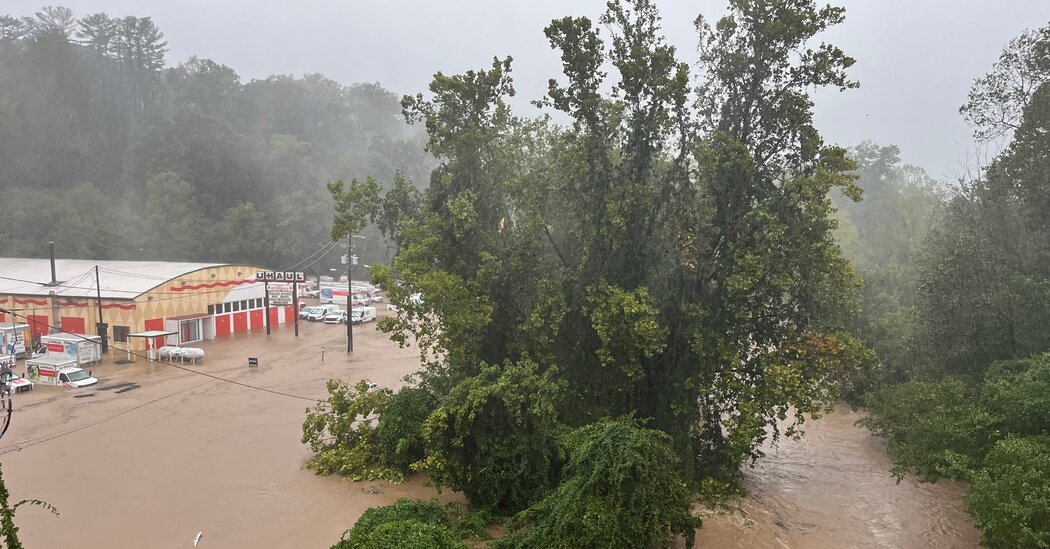More than a foot of rain turned major roadways in cities in the southeastern United States like Asheville, N.C., and Atlanta into floodplains on Friday when already saturated soils were overwhelmed by the torrential bands of Helene.
Rain from the storm also caused trees, rocks and channels of mud to slide down steep slopes, covering roads and making portions of highways impassable, according to images and videos on social media. But the number and severity of mudslides have been difficult to assess in many places.
“I know we had many in our mountains but right now communication is really poor,” Bradley Panovich, the chief meteorologist for WCNC Charlotte, said in an email. With emergency personnel engaged in rescue efforts and many areas cut off, the extent of the disasters remained unclear on Friday in much of North Carolina, he said.
Philip Prince, a geologist for an Asheville-based company called Appalachian Landslide Consultants, said he expected reports of damage to emerge soon.
“Travel is still so bad that widespread surveying isn’t possible yet,” Mr. Prince said. “Given rainfall amounts prior to the storm and the final pulse of rain from the passage of Helene itself, there will be widespread land sliding.”
Before the storm’s arrival, the National Weather Service warned of “significant landslide events” that could be set off by “historic, catastrophic and life-threatening” flooding.
